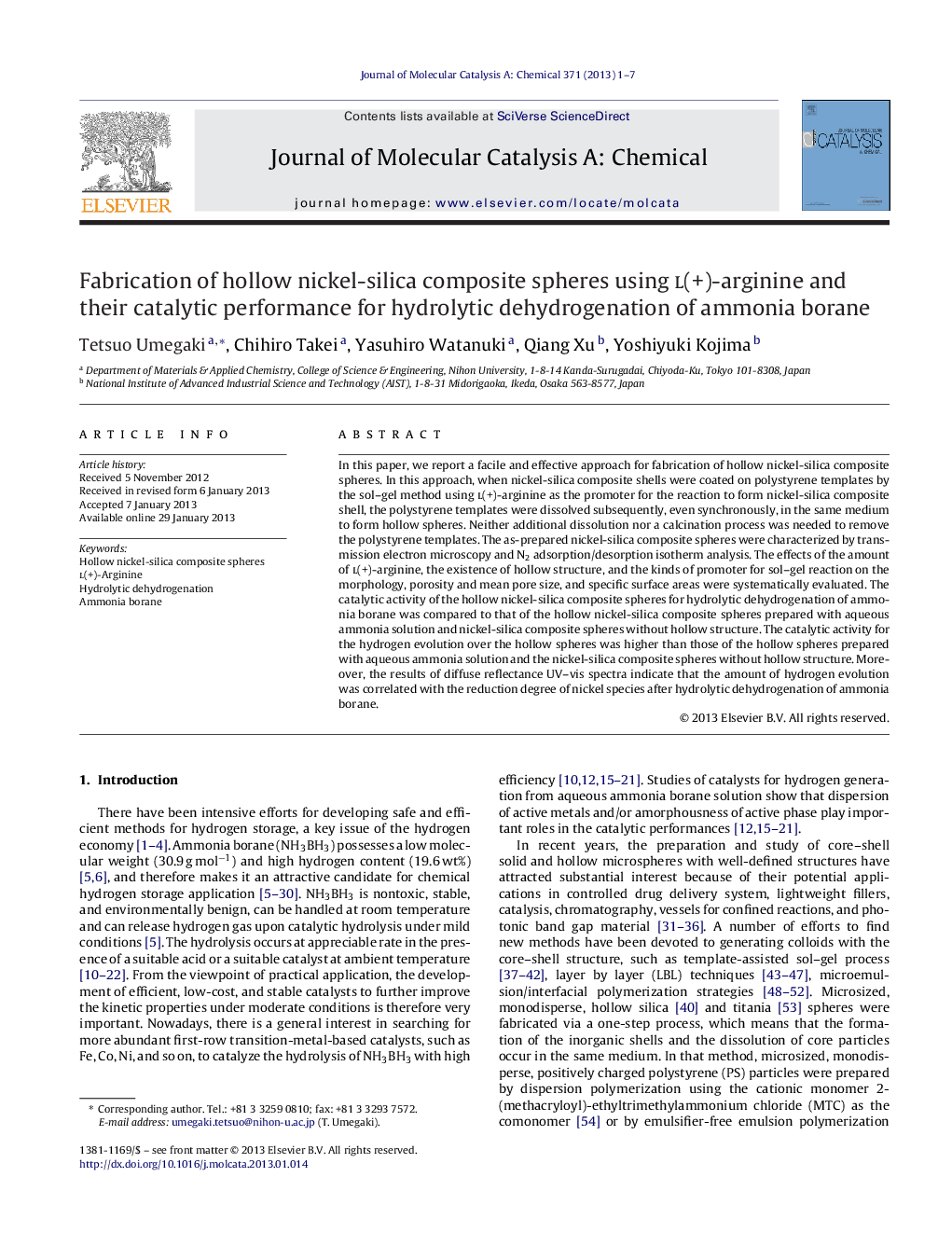| کد مقاله | کد نشریه | سال انتشار | مقاله انگلیسی | نسخه تمام متن |
|---|---|---|---|---|
| 65855 | 48406 | 2013 | 7 صفحه PDF | دانلود رایگان |

In this paper, we report a facile and effective approach for fabrication of hollow nickel-silica composite spheres. In this approach, when nickel-silica composite shells were coated on polystyrene templates by the sol–gel method using l(+)-arginine as the promoter for the reaction to form nickel-silica composite shell, the polystyrene templates were dissolved subsequently, even synchronously, in the same medium to form hollow spheres. Neither additional dissolution nor a calcination process was needed to remove the polystyrene templates. The as-prepared nickel-silica composite spheres were characterized by transmission electron microscopy and N2 adsorption/desorption isotherm analysis. The effects of the amount of l(+)-arginine, the existence of hollow structure, and the kinds of promoter for sol–gel reaction on the morphology, porosity and mean pore size, and specific surface areas were systematically evaluated. The catalytic activity of the hollow nickel-silica composite spheres for hydrolytic dehydrogenation of ammonia borane was compared to that of the hollow nickel-silica composite spheres prepared with aqueous ammonia solution and nickel-silica composite spheres without hollow structure. The catalytic activity for the hydrogen evolution over the hollow spheres was higher than those of the hollow spheres prepared with aqueous ammonia solution and the nickel-silica composite spheres without hollow structure. Moreover, the results of diffuse reflectance UV–vis spectra indicate that the amount of hydrogen evolution was correlated with the reduction degree of nickel species after hydrolytic dehydrogenation of ammonia borane.
Figure optionsDownload high-quality image (84 K)Download as PowerPoint slideHighlights
► Hollow nickel-silica composite spheres are prepared with polystyrene templates.
► Hollow spheres prepared with l(+)-arginine are highly active for hydrolysis of NH3BH3.
► Hydrogen evolution amount was correlated with the reduction degree of nickel species.
Journal: Journal of Molecular Catalysis A: Chemical - Volume 371, May 2013, Pages 1–7